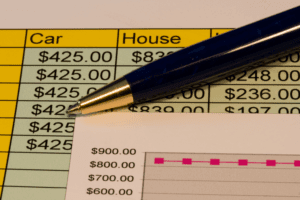
The metric focuses on the normalized EBITDA which is a useful comparative versus historical performance and also relative to peers. Not including debt in calculating the performance of a company has its negatives. Sometimes a company will highlight its EBITDA margin as a tactic to draw attention away from its debt and enhance the perception of its financial performance.
- The difference between the EBITDA and operating margin is the exclusion (i.e. in the case of EBITDA) of depreciation and amortization.
- For companies with high debt levels, the EBITDA margin is not a suitable measure.
- It’s easier to compare because it’s shown as a percentage, not a dollar amount.
- This shows that company B has a higher level of debt, a higher tax rate, and a higher depreciation and amortization expense than company A, which reduce its net income and cash flow.
- By providing a comprehensive understanding of EBITDA and its significance, this section aims to equip readers with the knowledge to analyze a company’s financial performance more effectively.
Calculating EBITDA Margin

To address this limitation, some analysts use a modified version of EBITDA margin, called EBITDA minus CAPEX margin, which subtracts the CAPEX from the EBITDA before dividing it by the revenue. This gives a more realistic picture of the company’s cash-generating ability and profitability after accounting for its capital spending. EBITDA is calculated by what is ebitda adding back interest, taxes, depreciation, and amortization expenses to a company’s net income. It provides a clearer picture of a company’s operating performance by excluding non-operating expenses and non-cash items. EBITDA is often used by investors, analysts, and lenders to assess a company’s financial health.
What are the Benefits of Using EBITDA Margin in Determining Business Profitability?
- Walmart’s EBITDA margin of 5.8% indicates that the company generates $0.058 of EBITDA for every $1 of revenue.
- EBITDA margin is not defined by the generally accepted accounting principles (GAAP) or the international financial reporting standards (IFRS), and there is no uniform or consistent way of calculating it.
- For example, EBITDA margin can show how a company is increasing or decreasing its revenue, controlling or reducing its operating costs, or investing or divesting in its fixed assets.
- R&D are expenses related to the discovery of new technology and are ignored for this calculation.
- We recommend them to anyone needing any type of commercial real estate transaction and we further highly recommend them for any type of commercial financing.
- This margin is lower than Johnson & Johnson’s but higher than Walmart’s, reflecting the home improvement retail industry’s profitability profile.
This information to calculate the EBITDA margin can be found in the financial statements. Sales http://lisandrapinto.com.br/site/bookkeeping-101-a-guide-to-bookkeeping-basics/ (or revenues) figures are reported in the income statement along with operating profit. A low EBITDA margin indicates that a business has profitability problems as well as issues with cash flow. A high EBITDA margin suggests that the company’s earnings are stable.
Everything You Need To Master Financial Modeling

InvestingPro offers detailed insights into companies’ EBITDA Margin including sector benchmarks and competitor analysis. Watch this short video to quickly understand the main concepts covered in this guide, including the definition of EBITDA, the formula for EBITDA, and an example of EBTIDA calculation. Lastly, EBITDA margin is not recognized in generally accepted accounting principles – GAAP. They are reputable, knowledgeable, and ethical with proven results. Assets America was incredibly helpful and professional in assisting us in purchasing our property. It was great to have such knowledgeable and super-experienced, licensed pros in our corner, pros upon which we could fully rely.

Conversely, a below-average EM may indicate problems with cash flows and profitability. Revenues are reported at the top of the income statement and can be referenced in the calculation of EBITDA margin. Using this method, we can determine that this company has an EBITDA of 1,119.7 and an EBITDA margin of 30.7% for the time period. For many companies, operating profit is equal to EBIT, but analysts will need to check this prior to calculating EBITDA for each company as there may be variations.
Account
EBITDA represents earnings from core operations before non-operating expenses. Total revenue includes all income generated from business activities before deducting any costs. By dividing EBITDA by total revenue, https://www.bookstime.com/articles/what-is-a-corporate-purchasing-card the formula shows how much of each dollar earned translates into operating profit.
- Companies with strong brand loyalty or proprietary products tend to maintain better margins than those competing primarily on price.
- Capital-intensive industries like manufacturing and utilities often have lower EBITDA margins due to significant depreciation and amortization expenses tied to physical assets.
- This percentage can be used to compare Jake’s efficiency and profitability to other companies regardless of size.
- Companies with low-profit margins may try to window dress their margin figures by highlighting EBITDA margin instead of Net Profit Margin.
- If the margin increases, it is desirable to indicate an improved performance.
- Startups and high-growth firms often report lower EBITDA margins because they reinvest heavily in expansion, prioritizing market share over immediate profitability.
- This figure is usually found in the non-operating expenses section of the income statement.
Gross Margin

Different companies may use different methods or assumptions to calculate EBITDA and EBITDA margin, which may lead to confusion and inconsistency. EBITDA margin may also be manipulated or distorted by some companies to present a more favorable picture of their performance. For example, if a company has a revenue growth rate of 30%, its EBITDA margin should be at least 10% to meet the Rule of 40. If the company’s EBITDA margin is higher than 10%, it indicates that the company is generating additional profitability from its existing operations. Conversely, if the EBITDA margin is lower than 10%, it suggests that the company’s profitability may be compromised despite its growth rate.
- Since EBITDA excludes interest on debt, non-cash expenses, capital expenditures, and taxes, it does not necessarily provide a clear estimate of what cash flow generation for the business is.
- If you’re comparing your EBITDA margin to non-public competitors, be cautious.
- A company with a high EBITDA margin but significant debt obligations may still face financial strain, as EBITDA does not account for interest payments.
- This lower margin compared to Apple and Exxon Mobil is typical for the retail industry, which operates on high volumes and low profit margins.
- The EBITDA margin provides a picture of how efficiently a company’s revenue is converted into EBITDA.
Because EBITDA excludes D&A, the metric is a measure of operating profitability that is not distorted by any outsized non-cash accounting charges recognized on the income statement. The EBITDA margin ratio shows that every dollar Jake generates in revenues results in 26 cents of profits before all taxes and interest is paid. This percentage can be used to compare Jake’s efficiency and profitability to other companies regardless of size. That indicates the company is effective in generating profits and efficient in managing costs.

#1 – Considered to be Cash Operating Profit Margin
This means that the company may have a cash flow problem and may not be able to meet its short-term obligations or take advantage of growth opportunities. To address this limitation, some analysts use a metric called EBITDA minus change in working capital margin, which subtracts the change in working capital from the EBITDA before dividing it by the revenue. This gives a more accurate picture of the company’s cash flow and profitability after accounting for its working capital needs.
Leave a Reply